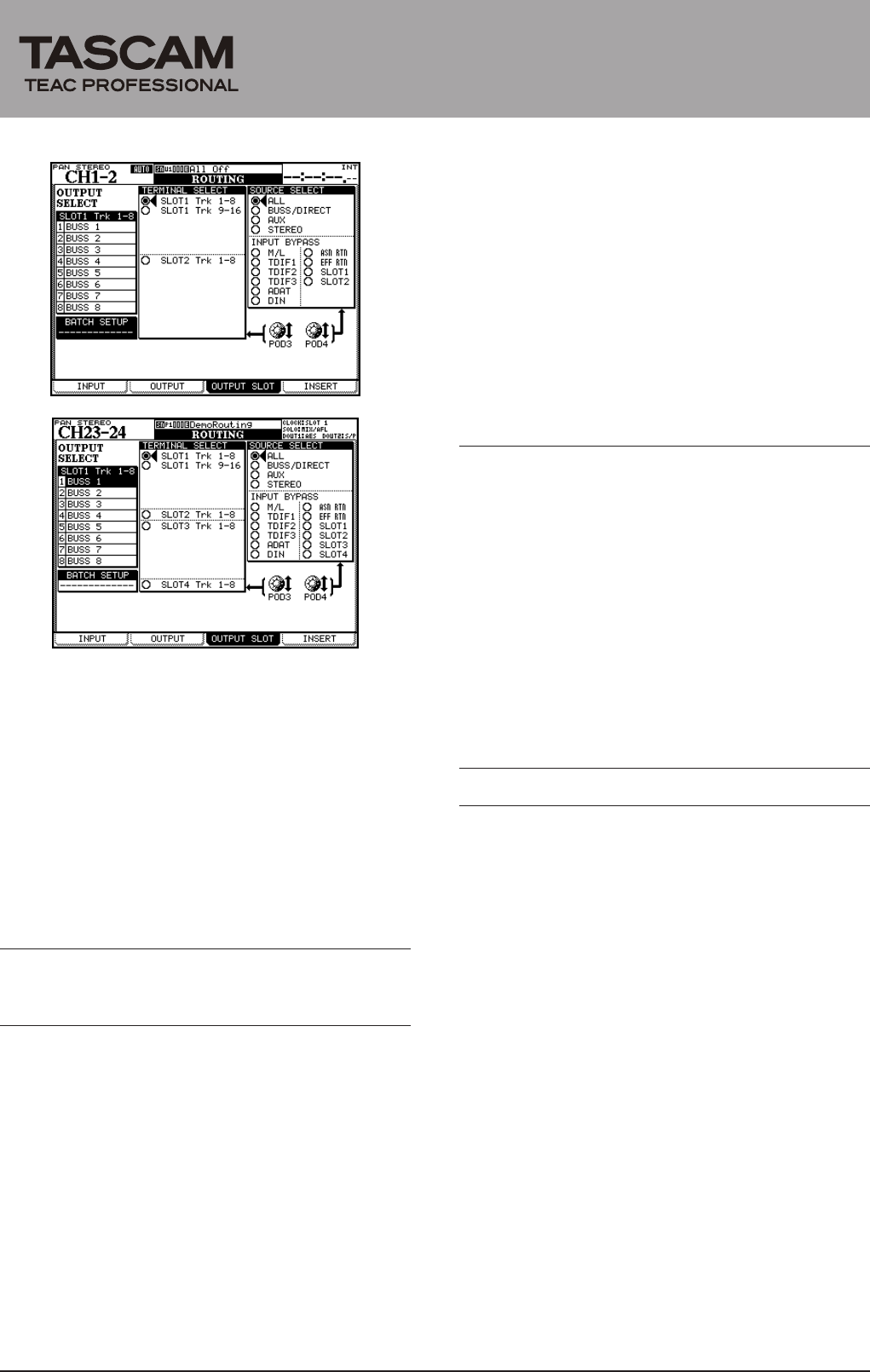
IF-AV/DM
Aviom Pro16 A-Net Interface Card
1 Use the POD 4 knob to select the output source
group from the SOURCE SELECT at the right of the
screen. Options for each of the outputs in the output
source group selected here are shown the OUTPUT
SELECT section on the left of the screen.
2 Use the POD 3 knob to select an IF-AV/DM output
channel group (8 channels) to set in the TERMINAL
SELECT section in the center of the screen.
3 Use the cursor keys to select an output channel in the
OUTPUT SELECT section, and turn the JOG/DATA
dial to select its output source. Press the ENTER key
to confirm the selection.
Mixer inputs
The IF-AV/DM does not provide any inputs to the mixer.
Using stereo links
You choose up to 16 signals to send from the DM-3200 or
DM-4800 mixer to the Aviom personal mixer. These signals
are usually direct outs from the mixer inputs, but could be
aux busses, etc. These 16 signals are fed to each Aviom
personal mixer, where the user makes their own mix, as
described in the Aviom user’s manual.
For stereo input sources such as keyboards, drum machines,
CD players, main mixer sub-mixes, etc., it is convenient to
be able to control the volume as a pair. To designate a pair
of channels, they must be linked using the Mixer Control
screen described earlier.
Only adjacent Channels can be linked (Channels 1 and 2,
Channels 3 and 4, etc.). When Channels are linked, they
act as one source on the Aviom Personal Mixer. When you
select either of the two linked Channels on the Mixer, both
LEDs will light up, indicating that they are linked. Volume
changes affect both Channels simultaneously.
Channels that are linked from the DM-3200/DM-4800 will
appear linked on every Personal Mixer connected to the
system. You can link or un-link Channels as needed, even
while audio is running through the system. All connected
Personal Mixers update immediately.
The spread control
When two Channels are linked, they no longer have
separate pan controls on the Aviom Personal Mixer.
With the Channel link comes a new feature, called Spread.
The Spread control varies the stereo image of the two linked
Channels from full stereo to mono. This allows you to
position stereo sources in your mix by controlling the width
of the stereo image.
Spread changes the panning of the left and right Channels
simultaneously.
Instead of having two Channels panned 100% left and right,
Spread allows the Channels to be panned to 60% left and
right, for example.
Specifications
DM-4800/DM-3200 requirements
ª
Firmware
DM-3200: Version 1.70 or later
DM-4800: Version 1.70 or later
Note: Use the TMCompanion software to update the
rmware of the DM-3200/DM-4800.
Mixer slot
DM-3200: Use slot 1
DM-4800: Use slot 1 or 3
General
ª
Audio outputs: 16
Quantization bit rate: 24-bit
Sampling frequency: 44.1/48 kHz
A-Net output: RJ-45
Compatible cables: Category 5e (straight)
Maximum cable length: 150 m
External dimensions: 164 (w) x 40 (h) x 221 (d) mm
Weight: 0.3 kg
TEAC CORPORATION
Phone: +81-42-356-9143 1-47 Ochiai, Tama-shi, Tokyo 206-8530, Japan
Printed in China






